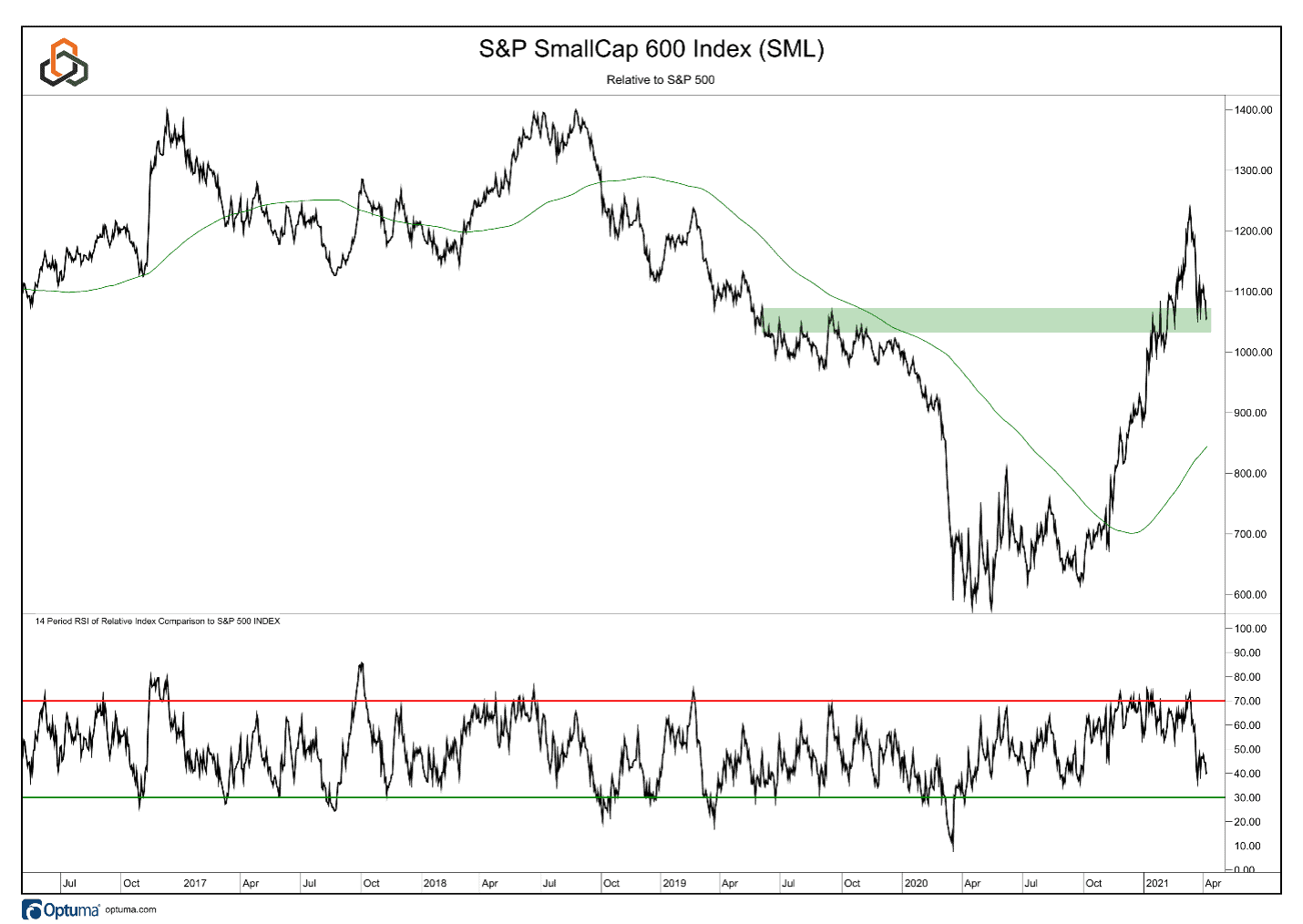
Key Points
Trends continue to point to a willingness on the part of investors to take on risk, but what will lead? Small vs Large and Growth vs Value are staging a battle to answer this question, but the answer may lie in the path of the Copper vs Gold ratio.
Chart in Focus
The ratio of Copper to Gold (using spot prices) can be a useful guide when thinking about allocations within the equity and fixed income markets. Copper is an industrial metal which is widely used throughout the global economy. Gold is a precious metal that is often turned to during times of economic uncertainty. When Copper is leading Gold, we can assume that investors are anticipating better economic prospects. This tends to favor the economically sensitive stocks, as well as higher rates. When Copper is lagging Gold, as it did from 2018 – 2020, investors are likely pricing in slower economic growth.
The ratio has entered a short-term consolidation that has, thus far, held above the rising 50-day moving average (red) after becoming extremely overbought and extended from the 200-day moving average (green). The pause here has alleviated the overbought condition and the RSI remains in a bullish regime. Odds favor a continuation higher for the Copper / Gold relationship.
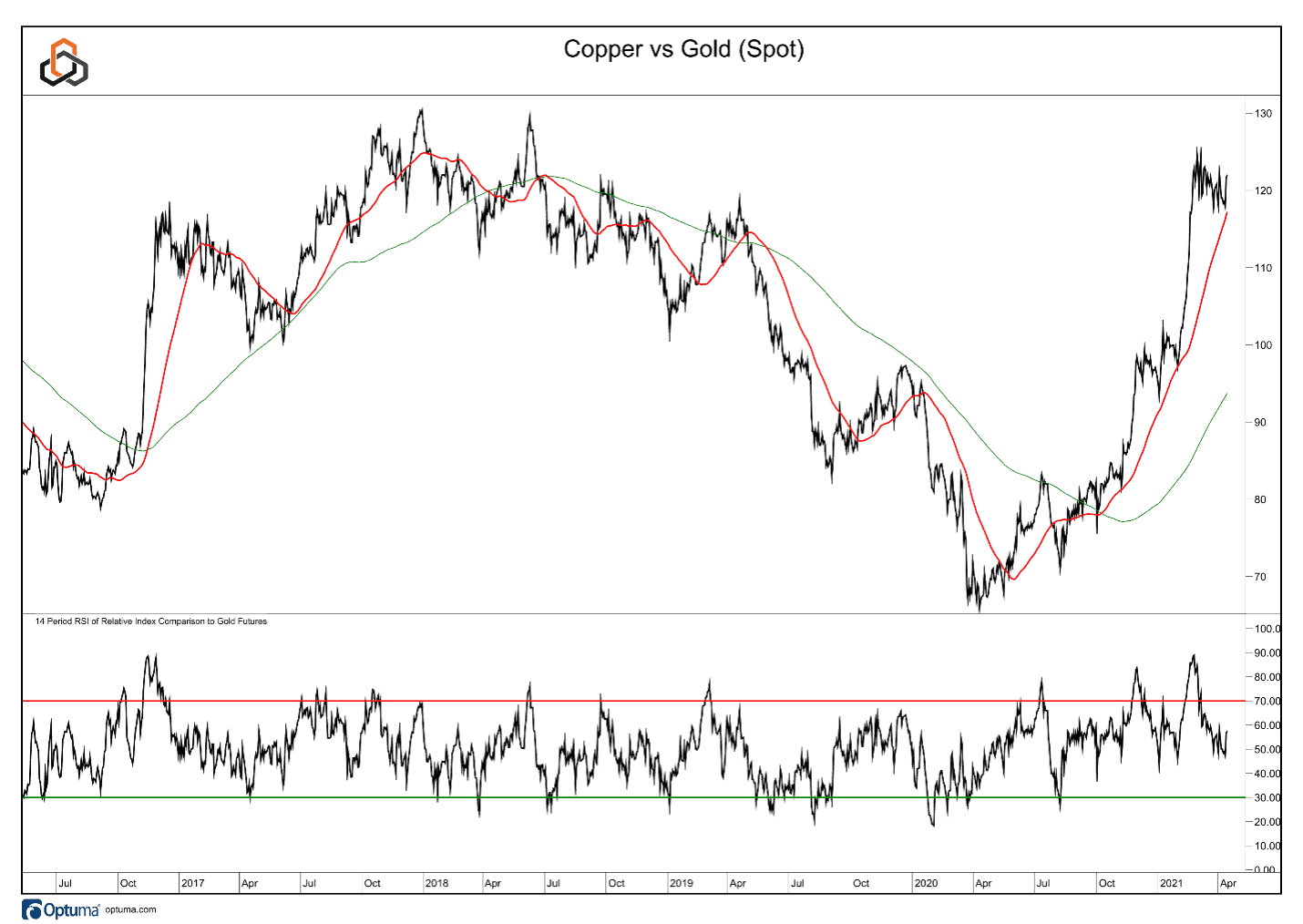
Key Themes and Relationships
This week, we update our view on the key relationships that we track across the market in order to get a sense of investor’s willingness to take on risk. We also highlight the trends playing out in major factors such as Growth, Value, Large Cap and Small Cap.
High Beta vs Low Volatility
The ratio of S&P 500 High Beta to S&P 500 Low Volatility remains in an uptrend but is consolidating after trading to a new high in March. The RSI of the ratio remains in a bullish regime, arguing for a continuation of the prevailing trend. A break below the March low would likely open the door to further downside and a test of support at the rising 200-day moving average or the November breakout level.
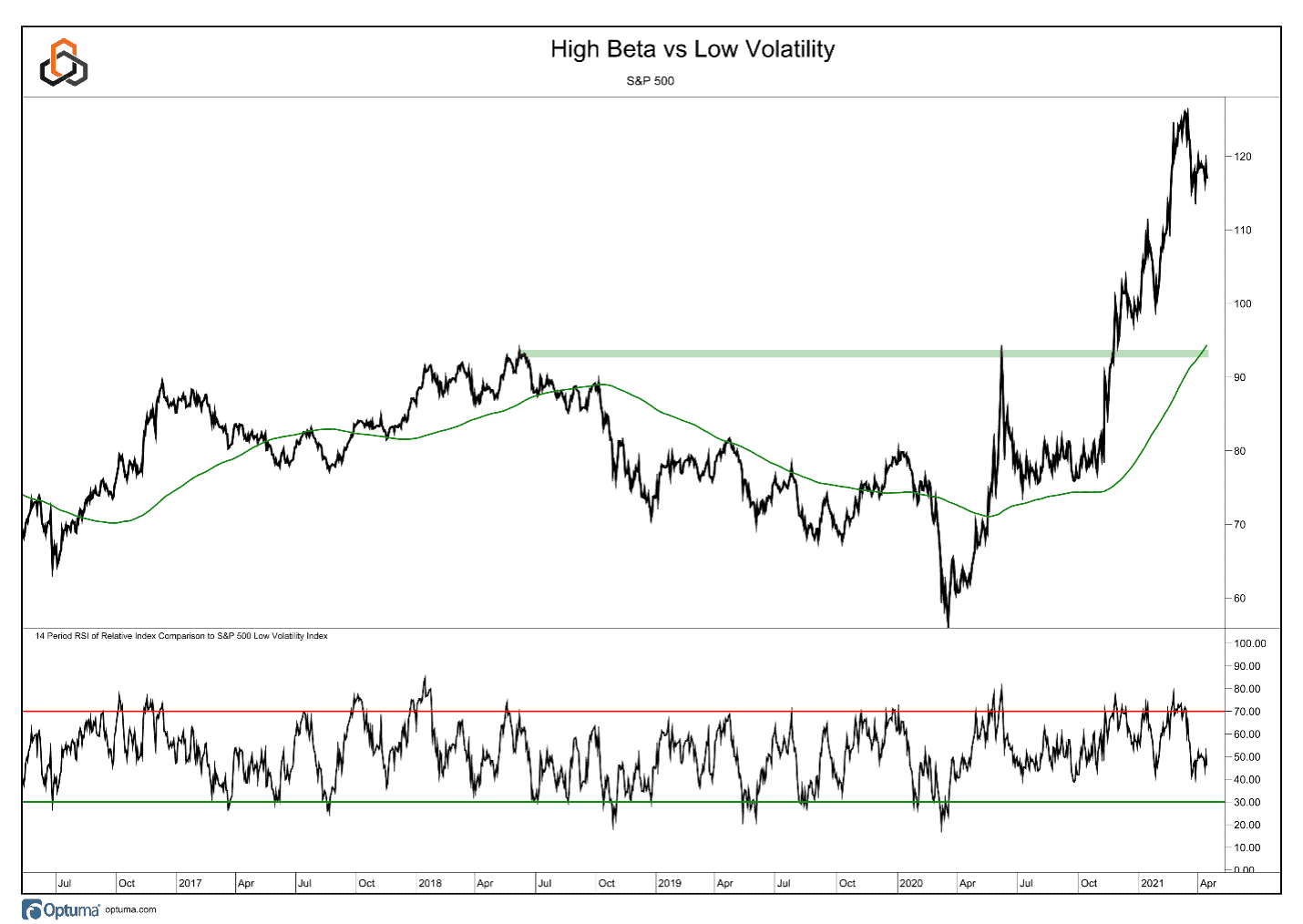
In last week’s note we discussed why this is an important relationship for gauging the risk appetite of investors. There are also important implications from an allocation perspective as the high beta index is weighted toward the sectors of the market that have benefitted from the reflation / reopening theme.
Consumer Discretionary vs Consumer Staples (Equal Weight)
The ratio of Consumer Discretionary stocks to Consumer Staples stocks traded to a new high last week, lending a bullish confirmation to the string of record highs that the S&P 500 has set in the month of April. The ratio remains above the breakout level and the rising 200-day moving average. The RSI is the one flag that we can see as it has made a series of lower highs since the start of the year. This divergence is simply a warning which must be confirmed with a break of support.
*We use the equal weight indexes to account for AMZN’s large weight in the Discretionary sector.
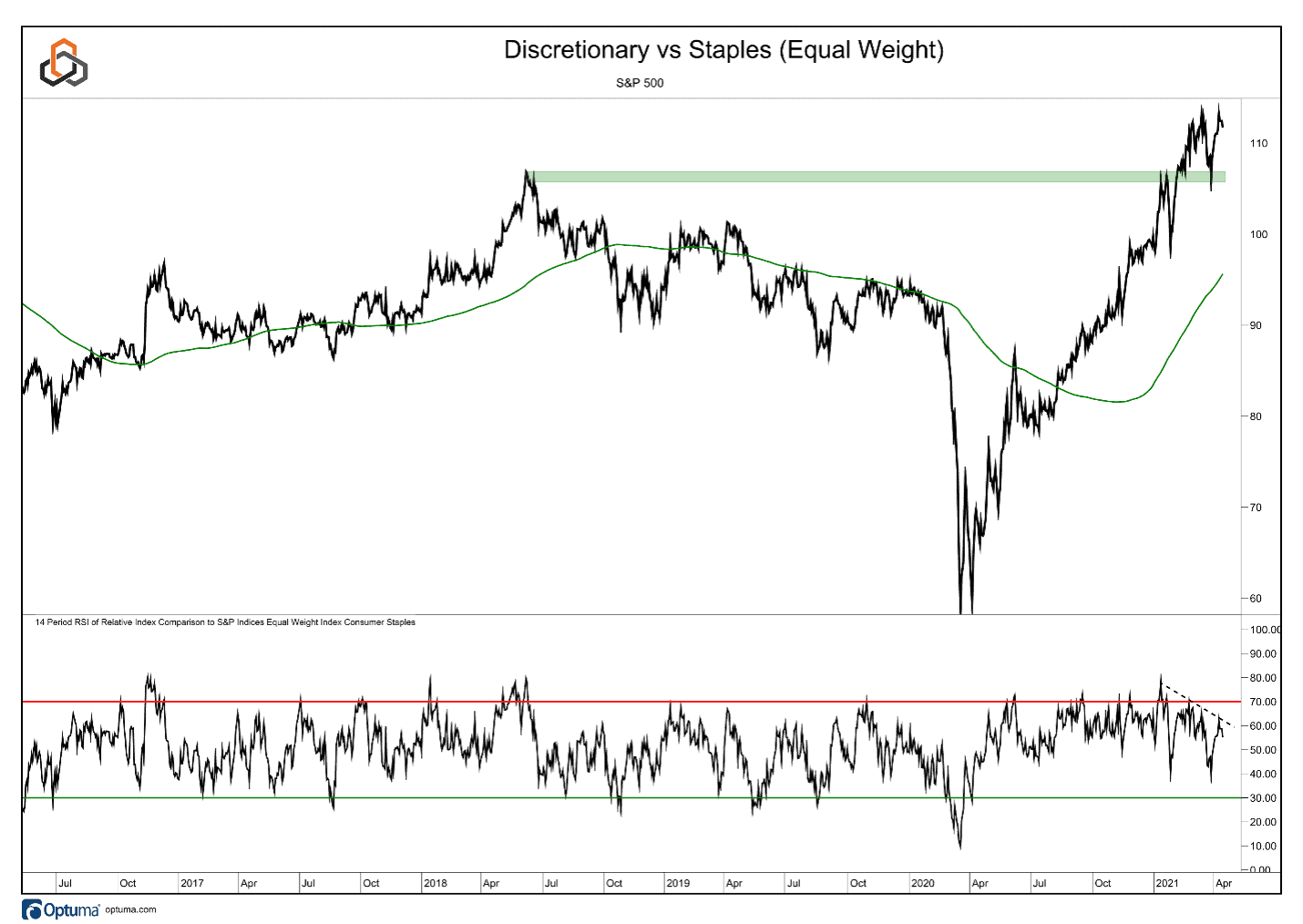
Credit Spreads
The BoA Merrill Lynch US High Yield CCC or Below Option-Adjusted Spread looks at the performance of U.S. dollar denominated below investment grade rated corporate debt compared to a spot Treasury curve.
The bond market does not appear to be sending a warning signal at this point, as this spread is on the verge of breaking support at the 2014 and 2018 lows.
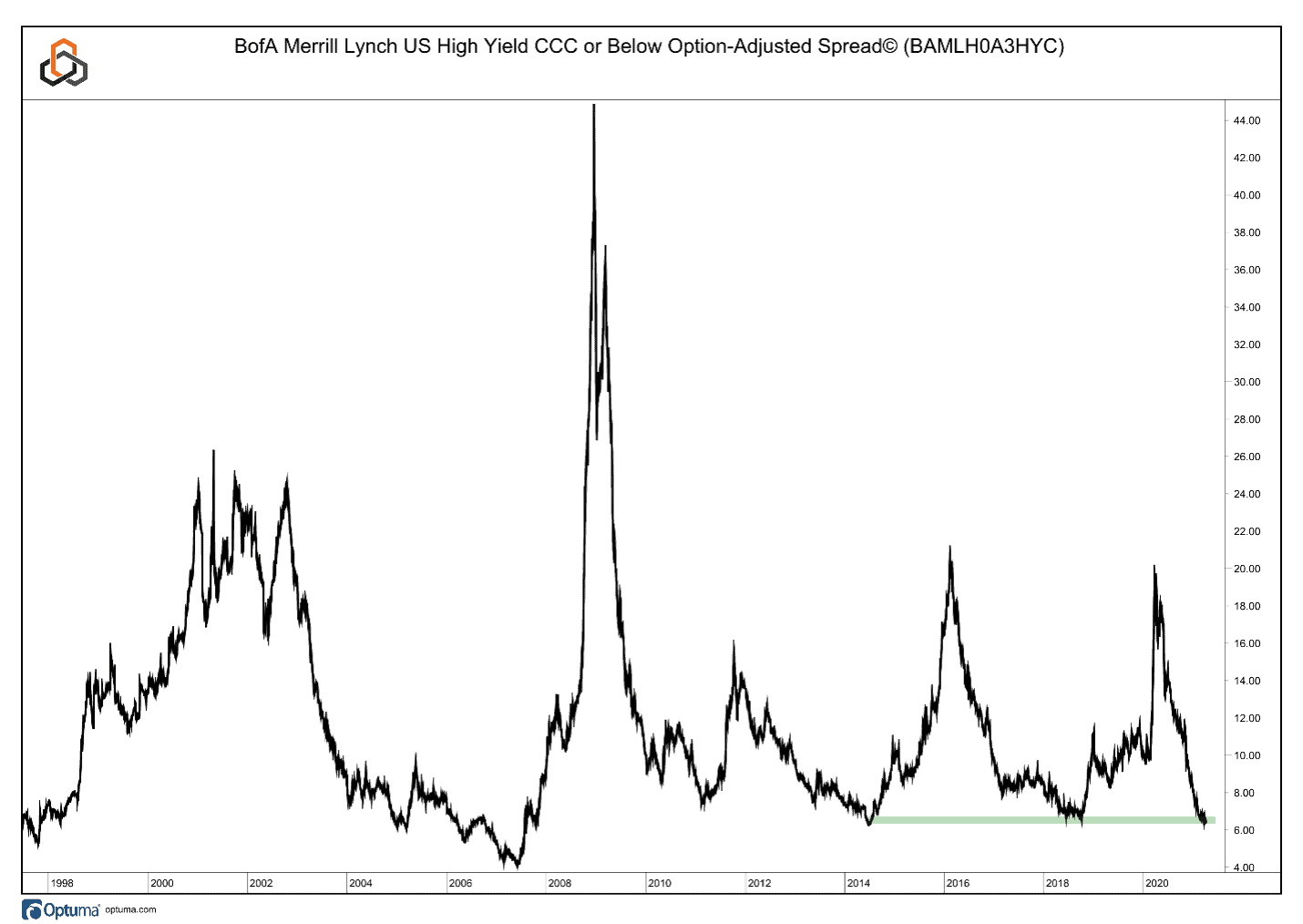
While the relationships above give us a sense that investors remain risk seeking, pointing to increased odds that the bullish equity trend is likely to persist, the themes below can show us where investors are allocating capital within this bullish trend.
Growth vs Value
The relationship between Growth and Value is arguably one that is front and center for many investors right now. After years of outperformance on the part of Growth, the Value theme has been in the driver’s seat since last summer. This has pushed the ratio below the 200-day moving average to test the May 2020 low, which has held as first support thus far. During the decline, the RSI moved into an oversold position and the subsequent rebound has not been enough to push this indicator out of a bearish regime.
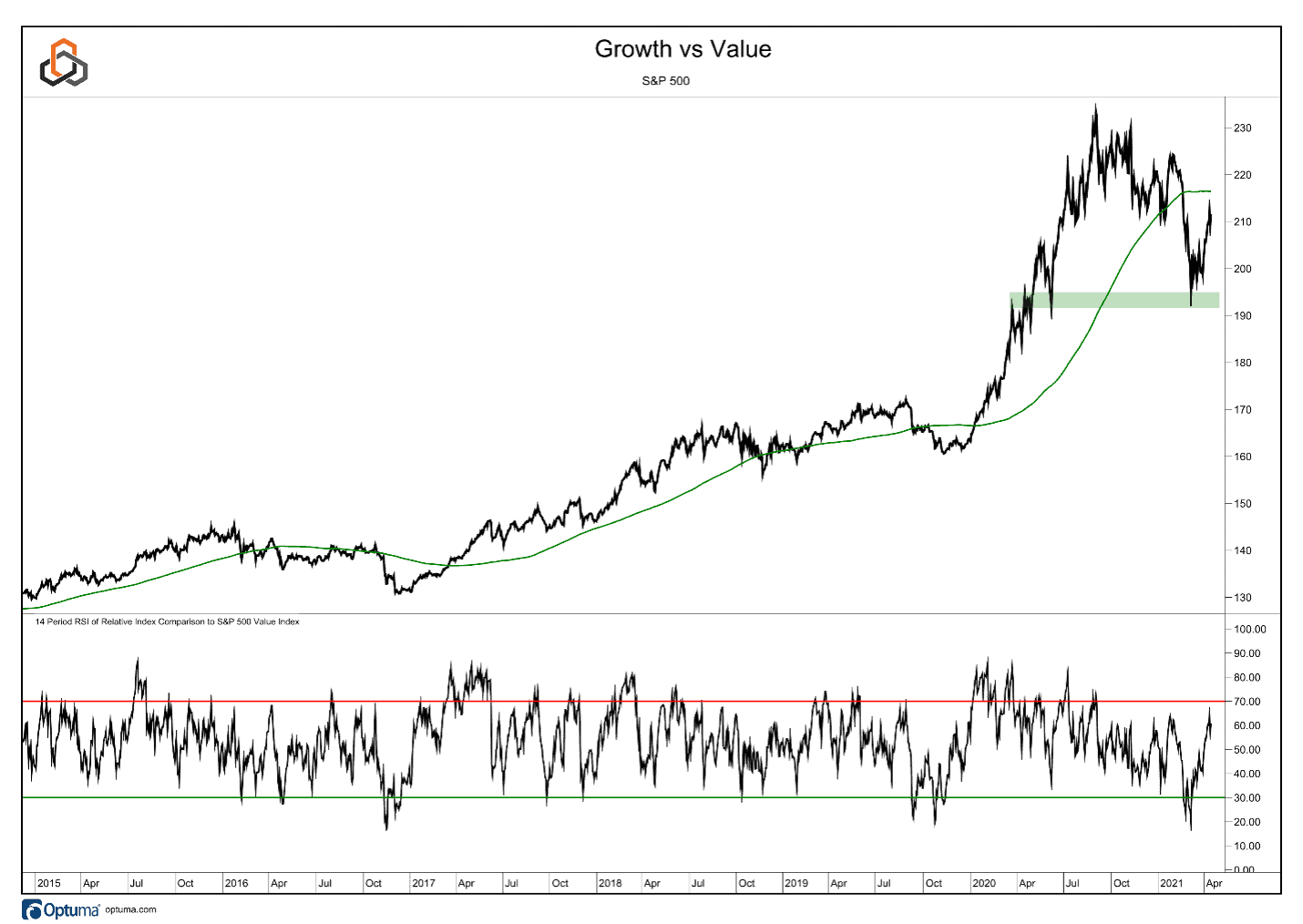
Small vs Large
The S&P 600 Small Cap Index relative to the S&P 500 has come under near-term pressure after a strong rally that began in November. The ratio is now testing support at the 2019 consolidation and we note that the RSI has not become oversold during this test, keeping momentum to the upside with the larger trend.
